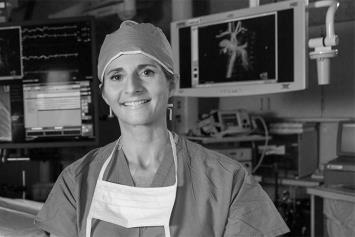Non-Ossifying Fibromas
Non-ossifying fibromas are considered to be one of the most common types of bone tumors in children. They are not cancerous.
What Are Non-Ossifying Fibromas?
Non-ossifying fibromas (NOF) are non-cancerous (benign) tumors made of fibrous tissue. Non-ossifying means these tumors do not harden into bone.
NOFs occur in 20% to 40% of children, making it one of the most common types of benign bone tumor in children. They are most common in children between 10 and 15 years old. Boys are twice as likely as girls to develop NOFs.
Children will usually have only one NOF. Multiple NOFs are rare and associated with rare diseases, including Jaffe-Campanacci Syndrome.
These tumors are frequently found in the thigh bone (femur) and shin bone (tibia). They are less often found in the calf bone (fibula) and upper arm bone (humerus).
NOFs have no known cause or risk factors.
What Are the Symptoms of Non-Ossifying Fibromas?
NOFs do not typically cause symptoms, (asymptomatic), and are often discovered when an X-ray is taken for another bone problem.
A constant dull ache may occur if the NOF weakens the bone. Sometimes the weakened and thinned bone can easily break, this is called a pathologic fracture.
Pain, especially during physical activity, may be present with large NOFs, especially if the bone has thinned.
Mild swelling and tenderness are other potential symptoms of NOFs.
How Are Non-Ossifying Fibromas Diagnosed?
Diagnosing NOFs begins with a thorough history and physical examination followed by imaging tests to view the tumor and affected bone.
X-rays are often enough to diagnose an NOF. On an X-ray, an NOF looks like a dark circle or oval near the edge of the affected bone. The tumor is surrounded by a thin layer of cortex, the white outer layer of bone.
Advanced imaging with magnetic resonance imaging (MRI) or computed tomography (CT) is sometimes necessary to determine if the tumor has damaged the bone. Pathologic fractures can be seen on MRI or CT.
How Are Non-Ossifying Fibromas Treated?
Most NOFs do not require treatment and will simply heal on their own once a child finishes growing: about 15 years for girls and 18 years for boys. Regular monitoring during clinic appointments with X-rays and physical exams will help your doctor determine if the tumor is healing or growing.
Treatment, if needed, is surgical and depends on a few factors, such as:
- Large tumor size
- Pain with physical activity
- History of pathologic fracture
- Bone is weakened and likely to fracture
There are two main surgical options for treating NOFs:
- Curettage and bone graft: A specialized instrument called a curette is used to scrape out the inside of the tumor. Next, the tumor is filled with a bone graft, taken from the body (autograft) or a donor (allograft). The tumor can also be filled with bone replacement material.
- Plate and screw fixation: This is rarely performed, needed only if the bone is so weak that it needs additional support after the tumor is removed and the now-empty area is filled with bone graft.
Post-surgical recovery takes about 3 to 6 months depending on factors like tumor size and the speed of bone healing after tumor removal. Follow-up appointments with imaging and physical exams are necessary to monitor healing. Fortunately, NOFs rarely recur after surgery.



